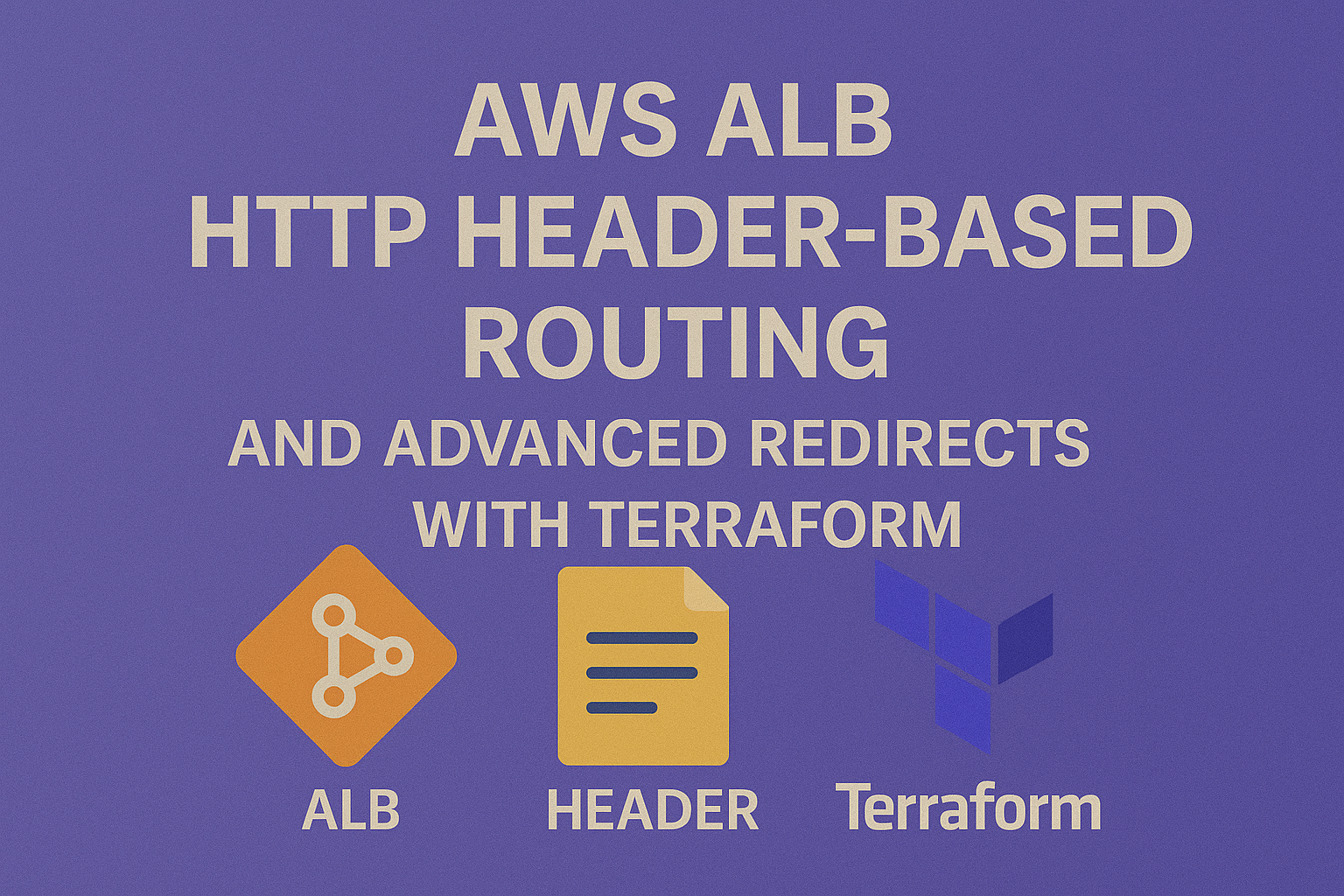AWS ALB HTTP Header-Based Routing and Advanced Redirects with Terraform

AWS ALB HTTP Header-Based Routing and Advanced Redirects with Terraform
Welcome back to my Terraform for AWS series focused on helping beginner DevOps engineers! 👋
In the previous part of this series, we implemented host-based routing for multiple applications behind an ALB. In this article, we take it further with HTTP Header-Based Routing and Redirect Rules.
This builds directly on our ALB module and expands the listener rules.
🔄 Key Changes Introduced in This Part
1. Listener Rules – HTTP Header-Based Routing
We replaced host-based rules with http_header-based routing. Instead of routing based on domain names, now traffic is routed based on a specific HTTP header called custom-header.
myapp1-rule = {
actions = [{
type = "weighted-forward"
target_groups = [{
target_group_key = "mytg1"
weight = 1
}]
stickiness = {
enabled = true
duration = 3600
}
}]
conditions = [{
http_header = {
http_header_name = "custom-header"
values = ["app-1", "app1", "my-app-1"]
}
}]
}
This block creates a routing rule that checks the HTTP header custom-header for values like app-1, app1, or my-app-1. If matched, traffic is forwarded to the target group mytg1. A similar block exists for mytg2 with header values app-2, app2, and my-app-2.
This is useful in multi-tenant apps or for routing based on custom API headers.
2. Redirect Rules Based on Query String and Host Header
We added two advanced redirect rules that demonstrate ALB’s flexibility:
A. Redirect by Query String
my-redirect-query = {
priority = 3
actions = [{
type = "redirect"
status_code = "HTTP_302"
host = "rezaops.com"
path = "/dummy-query-redirect"
protocol = "HTTPS"
}]
conditions = [{
query_string = {
key = "website"
value = "aws-eks"
}
}]
}
➡️ If a request contains ?website=aws-eks, it will be redirected to https://rezaops.com/dummy-query-redirect. This is helpful for search-based or campaign-based routing.
B. Redirect by Host Header
my-redirect-hh = {
priority = 4
actions = [{
type = "redirect"
status_code = "HTTP_302"
host = "rezaops.com"
path = "/dummy-host-header-redirect"
protocol = "HTTPS"
}]
conditions = [{
host_header = {
values = ["azure-aks11.rezaops.com"]
}
}]
}
➡️ This rule checks for the host header azure-aks11.rezaops.com and performs a redirect to a dummy path on rezaops.com. You can use this technique to guide users from deprecated subdomains to new paths or services.
These two examples show how to apply precise and user-friendly redirection logic at the load balancer level.
✅ What Stayed the Same
The ALB module version, target groups, and EC2 attachments remain unchanged:
- Target groups
mytg1andmytg2are still configured with HTTP health checks. - We use
aws_lb_target_group_attachmentto attach private EC2s to these target groups.
This consistency ensures zero disruption while adding new rules and behaviors.
📘 Summary
This part demonstrated how to:
- Route traffic using custom HTTP headers
- Configure advanced redirects using query strings and host headers
These techniques allow more granular control in multi-app, multi-tenant, or redirection-heavy environments.
📢 Coming Up Next:
Our next topic covers ALB-based redirects triggered by HTTP headers and query strings..
Stay tuned, and let me know your thoughts or questions in the comments!